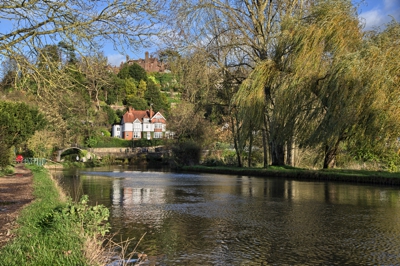 The modern town can trace its origins to the Roman occupation of Britain, evidence of Roman dwellings having been found throughout the area. By Saxon times a small town was well established and, as the Saxon era ended, William the Conqueror ordered the construction of a castle from which the new order exerted control over the local inhabitants. By the late 14th century the castle was of little practical importance and was abandoned, although the ruins and grounds continued to be used for less grand purposes, including cock fighting and farming.
The modern town can trace its origins to the Roman occupation of Britain, evidence of Roman dwellings having been found throughout the area. By Saxon times a small town was well established and, as the Saxon era ended, William the Conqueror ordered the construction of a castle from which the new order exerted control over the local inhabitants. By the late 14th century the castle was of little practical importance and was abandoned, although the ruins and grounds continued to be used for less grand purposes, including cock fighting and farming.
The town didn’t prosper in Mediaeval times, having a population of just over 1,000 souls, equivalent to a handful of villages. A Grammar School was founded in 1507 (and remains as a school today), but this improvement in the town’s fortune was promptly countered by a dramatic decline in the wool trade, triggered by Henry VIII’s dissolution of the monasteries.
The arrival of the railway in 1845 brightened the towns’ prospects, although it wasn’t until 1942 that the town could boast a public library. The following 40 years saw the addition of modern landmarks, including the Yvonne Arnaud theatre, civic hall, the university and the Royal Surrey Hospital.
Did You Know? Interesting Facts About Guildford
- Over 200,000 people contributed a brick to the cathedral construction fund.
- The university is ranked among the top 10 UK universities.
- Charles Lutwidge Dodgson, better known as Lewis Carrol, wrote “Through The Looking Glass” whilst living in Guildford.
- Henry III, King John, and Eleanor of Castile all stayed in Guildford Castle.
- The remains of what is believed to the oldest synagogue in Western Europe were found under the High Street.
- Parts of the film, The Omen, were filmed at Guildford Cathedral.
- Alan Turing, code-breaker and mathematician, lived in Guildford.
- Although Guildford has a cathedral it is not a city. In 2002 Guildford applied for city status, but was turned down.
- The first written reference to cricket appears in a 16th century court case involving the Royal Grammar School in Guildford.
